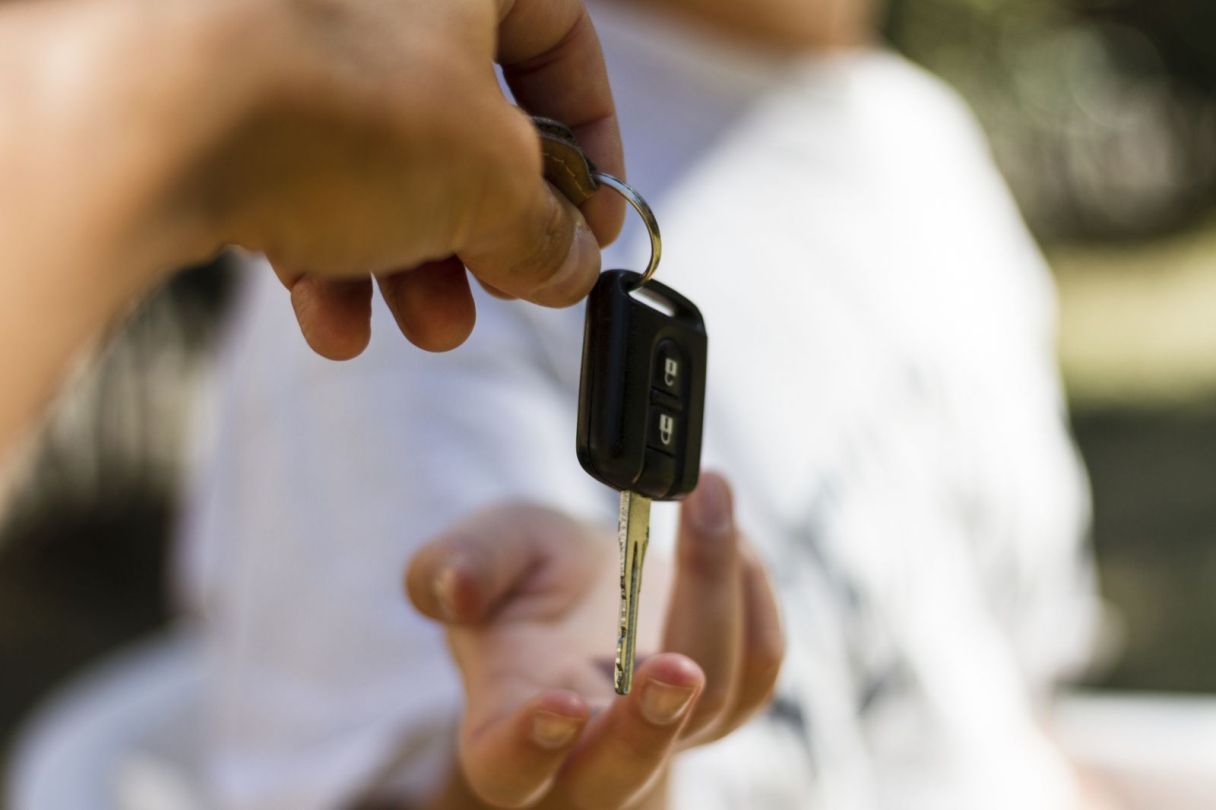Buying and paying for a car is a tricky business. After all, you don’t want to cut corners and purchase a vehicle that isn’t reliable. Otherwise, you run the risk of spending all your time and money at the mechanic. On the other hand, new cars are expensive and often come with hefty loans.

If you take out a car loan and then hit a financial bump, you might have difficulty making your car payments. What should you do if you can’t afford your car payment anymore? What if you are upside-down on your car loan?
What to Do if You Can’t Afford Your Car Payments
You have several options, and some are much better for your wallet and credit than others. Learn about each choice in advance so you can avoid worst-case scenarios with your car payments.
1. Reassess Your Auto Loan
When you’re about to fall behind on your car loan, the first thing to do is to contact your lender. Honesty is always the best policy, and you might be able to work something out.
After all, they don’t want you to default on the loan. Your interest payments are where they make the most money. Typically, you have a few different options when trying to change your loan terms.
2. Modify the Loan
This is an excellent option if you know that your financial problems are temporary. For example, maybe you are switching jobs and have a gap between your old job’s end date and your new job’s start date. Or perhaps you have some one-time medical bills to take care of.
Whatever the reason, your best chance of receiving a loan modification is if you have only missed a few payments. Just make sure you call your lender as early as possible because then you’ll have access to the most options.
Usually, the lender can let you miss a few car payments and add them to the final payments of the loan. So if you think your money problems will last the next few years, a loan modification isn’t a practical solution for you. But it can be helpful in many situations.
Talk Directly to Your Lender
A word of caution when researching your loan modification options: be sure to talk directly with your current lender. The FTC warns that some companies claim to be able to modify your loan by charging you an upfront fee. They may even tell you to stop making your car payments altogether.
This scam can ruin your credit because they more than likely have no bearing on your loan and just want the cash you pay in advance. Do your due diligence and make sure you’re negotiating with the right people.
3. Refinance the Loan
Another option you have is to refinance your car loan. This can help your monthly payments in one of two ways. The first is by extending the loan term over a longer period, stretching out your loan principal, and lowering your car payment.
The downside to loan extension is that you’ll end up paying more interest over time. Still, it keeps your credit intact and prevents your car from being repossessed.
Getting a Lower Interest Rate
The second way you can refinance your loan is to get a lower interest rate. You’ll need a good credit score, so make sure you try this option before any late payments start to affect your credit.
You can either refinance with your current lender or a new one. Shop around for different offers to find the best one. You can check with traditional banks and credit unions, as well as online lenders. Just make sure they have a good reputation.
Loan Origination Fees
In addition to interest rates and loan terms, also compare any fees that come along with the refinanced loan. You’ll probably be charged a loan origination fee, which will be tacked onto your principal balance. It usually ranges between 1-2% of your loan amount, so it can easily cost you an extra several hundred dollars.
Each state also charges a vehicle title transfer fee. The amount varies depending on where you live. However, it should only cost a few dollars, which will also be added to your loan amount.
Always remember that when considering your refinance options, you should consider the total cost of the loan to determine whether it’s the right choice for you.
See also: Best Auto Refinance Companies of 2024
4. Find Someone to Assume the Loan or Lease
Your final option in changing your loan is to get someone else to assume your loan payments. This tactic may sound strange, but it’s not entirely unheard of. However, it’s easier to get someone to take over your lease because it’s not a technical loan.
If you do have a loan, check your contract to see what your options are. For example, you might find a buyer who applies for their own car loan, then effectively pays off your car balance with it.
Usually, this happens with a friend or family member. While they’re not technically assuming your loan, they are purchasing your car with their own loan.
Lease Takeovers
Several websites are available for people trying to get out of a car lease. Someone might want to take over your car’s lease payments to avoid a down payment on their own lease. Or they may want to try a car out for a shorter period.
There are certain strings attached, so you’ll need to research each site to find out what you’re most comfortable with.
For example, each party will likely have to pay a few hundred dollars in fees. You also might still retain some level of responsibility for the vehicle, even though you’re not the one driving or paying for it anymore.
5. Sell The Car
Once you’ve explored your loan options, you might realize that you have no choice but to get rid of your car.
Hopefully, you can sell it and not walk away without much of a loss (and maybe even a profit). That’s always the best alternative to having it repossessed, either voluntarily or by force.
Selling your car is the best way to get out of your loan agreement. You can hopefully at least break even on the amount you owe your lender; if not, make a few bucks. However, many vehicle owners are surprised at how difficult this can be.
Cars typically lose up to 11% of their value just when you drive it off the lot and as much as 20% by the end of the first year. And that amount continues to depreciate, even as you pay on your loan for the full amount.
Upside Down on Your Car Loan
You might find yourself stuck in the unfortunate position that you owe more than your car is worth. But to transfer the title to another person, you’re required to pay off your loan in full.
So, how can you come up with the money? If your credit is decent, you might be able to get a personal loan through a credit union or online lender.
You can use the funds from that loan to pay off the remainder of your car loan. So yes, you’ll still be paying money on a car you don’t own. However, it will be much less expensive, especially if you’re having trouble coming up with your current monthly payment.
If you still need a car, try to borrow enough to buy a cheap used car that will get you where you need to go. You’ll still have transportation and hopefully will be paying just a fraction of your former monthly payments.
6. Voluntary Repossession
A voluntary repossession is when you turn in the keys to your car on your own, rather than having a forced repossession. This is really a worst-case scenario because even having your vehicle repossessed voluntarily comes with several repercussions both financially and on your credit.
That’s because you’re still held responsible for whatever amount is still owed on the car after the trade-in value is subtracted from your loan balance.
Depending on how much you owe, it could still be thousands of dollars. If this is your only option left, you can try to negotiate the amount owed with your lender.
The lender could also turn your account over to a collection agency, which will be added to your credit report along with the repossession. Each of these items can take years to recover from.
Avoiding Repossession
Repossession rules vary by state, but typically the lender is entitled to repossess your vehicle once your loan payments go into default.
With a repossession, you’ll still be held accountable for the deficiency balance after the car is sold off. Repossessions are reported to the major credit bureaus and stay on your credit report for seven years after the delinquency date, so it’s best to avoid this at all costs.
Your best solution is always to talk to your lender as early as possible! The repossession process is timely and costly on the lender’s end, so they often try to find a repayment plan that works for you.
7. File for Bankruptcy
If you’re facing overwhelming debt, you may want to consider filing for bankruptcy. Keep in mind it can have a major impact on your credit for up to 10 years.
Before deciding to pursue this route, take a close look at your finances and talk to a reputable bankruptcy attorney. It’s important to remember that bankruptcy should only be used as a last resort, as there may be other debt-relief options available to you.




